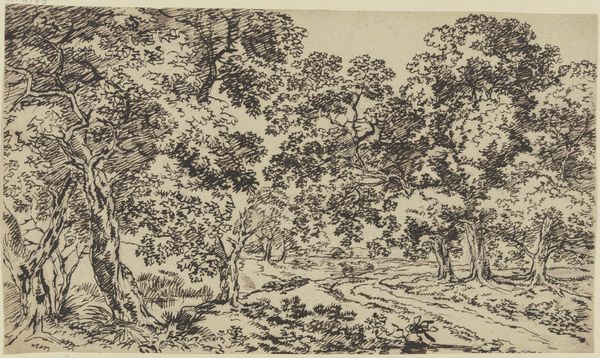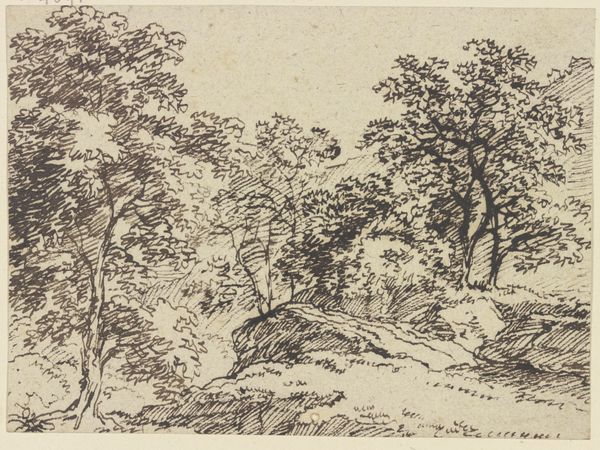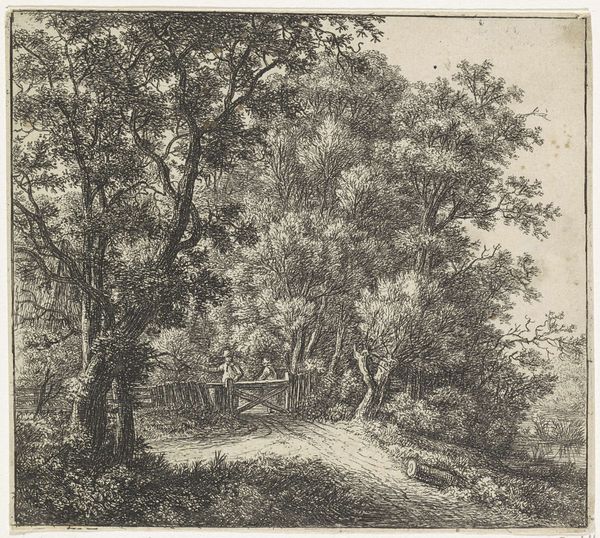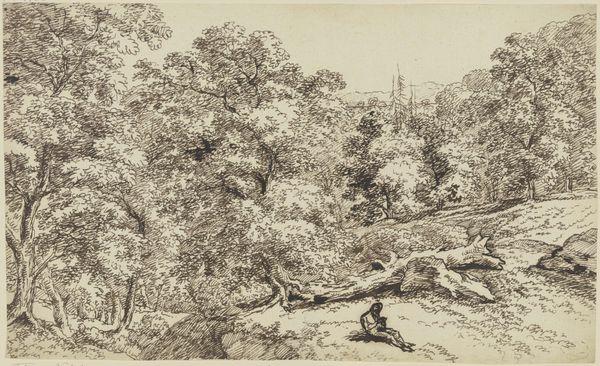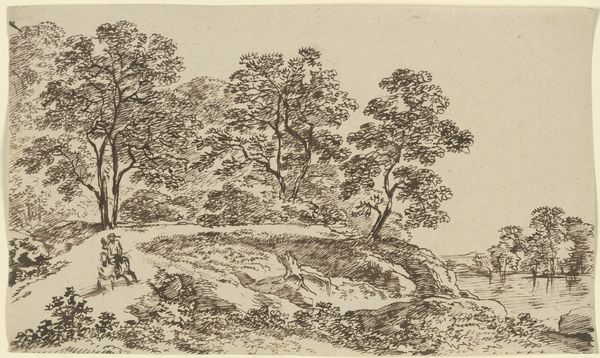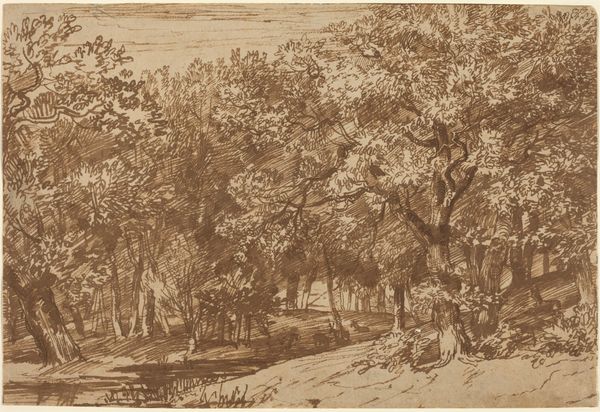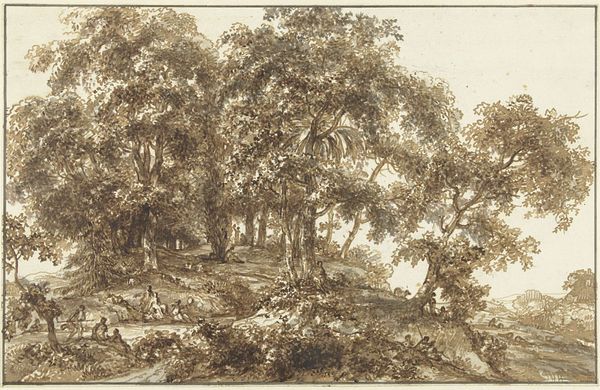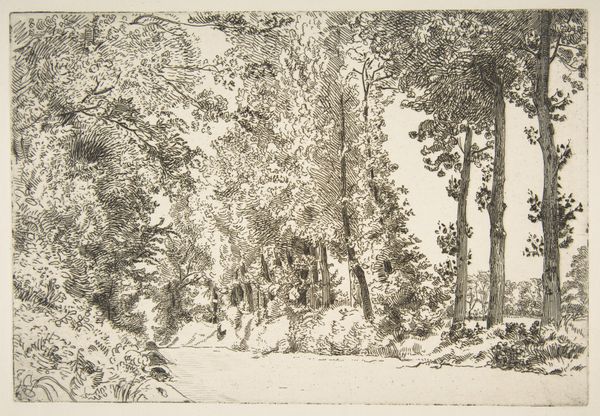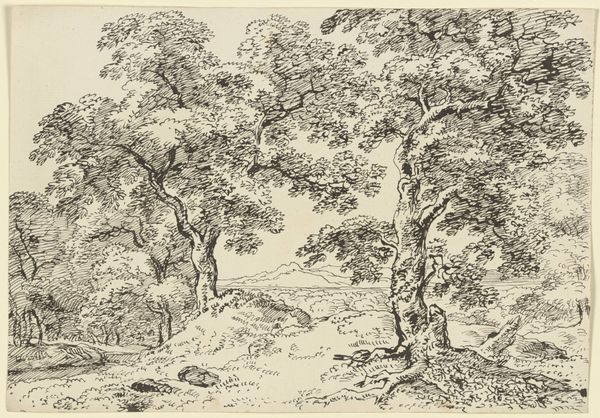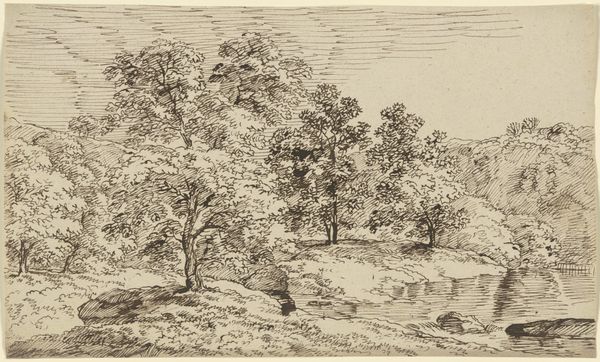
drawing, etching, paper, ink
#
drawing
#
etching
#
landscape
#
etching
#
paper
#
ink
#
romanticism
#
line
Copyright: Public Domain
Editor: This is "Waldinneres mit Staffagefiguren," a landscape drawing and etching by Franz Kobell, made with ink on paper. It creates such a sense of depth and mystery with what seems like very few lines. How should we interpret its place in art history? Curator: What I find compelling here is the tension between nature and its cultural framing. Etchings like this, reproduced and disseminated, were instrumental in shaping popular perceptions of the ideal landscape. Notice the figures nestled almost imperceptibly within the woods. Do they strike you as truly "of" nature? Editor: No, they seem like intruders almost. Are you saying that the very act of depicting a forest changes our understanding of it? Curator: Precisely! Consider how this image might have been consumed. Was it intended to inspire awe, fear, a desire for ownership, or something else entirely? The figures give it context – almost staging it. These prints circulated amongst an emerging middle class, solidifying a certain aesthetic linked to social standing. It connects to ideas about nature as picturesque, as a site of leisure and contemplation, separate from labour. Editor: That's fascinating. I never considered how something as simple as a drawing could reinforce those kinds of social divisions. Was there resistance to that? Did all art fall into this cultural framing? Curator: Certainly not! But recognizing the powerful role these seemingly innocent landscape scenes played in constructing cultural values provides a rich way of thinking about how art functioned within its society. Art either becomes a tool to reinforce, or it’s disrupting conventions. Editor: That's a perspective I really hadn't thought about before. It's made me think a lot about not only how images impact a society, but their inherent historical function too! Curator: Indeed. Thinking critically about such works opens a pathway to considering the role that art can play in shaping cultural beliefs and hierarchies, a constant negotiation we still see today.
Comments
No comments
Be the first to comment and join the conversation on the ultimate creative platform.
